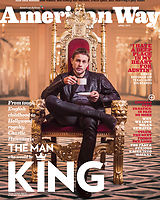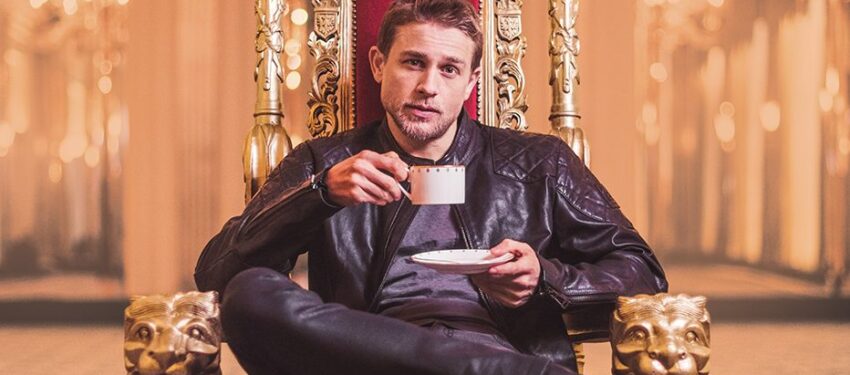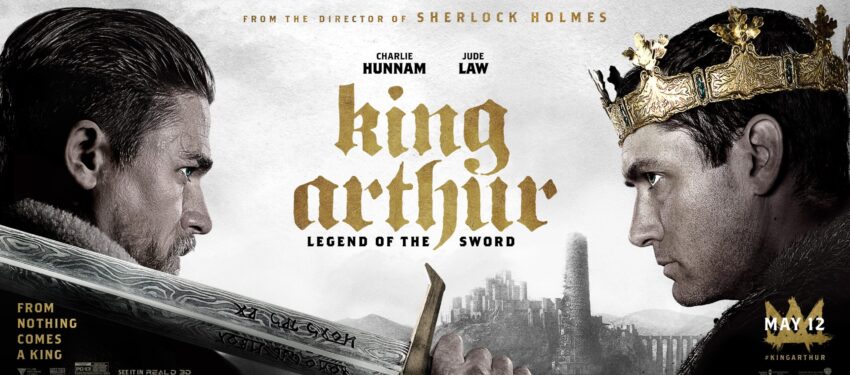Forget the abs, forget the jawline, forget the massive fighting robots — Charlie Hunnam just wants to be taken seriously
Charlie Hunnam doesn’t do Twitter, Instagram or Facebook. “I am so baffled by the whole phenomenon of social media,” he says. “To me, it speaks to going the wrong direction, trying to fill up this gaping hole that we all have in us.” The English-born actor is sitting at a table in his “office,” an unfussy restaurant on the Sunset Strip. He’d arrived for our interview 10 minutes early, dressed in a gray sweatshirt and jeans, waving a familiar hello to the employees on his way in.
 In the nine years since he first appeared on FX’s cult hit Sons of Anarchy, Hunnam, who turns 37 this month, has become a full-fledged Hollywood hunk. He has scruffy blond hair, pale blue eyes and abs that look like they were drawn on by somebody at Marvel Comics. But he doesn’t talk like that. “I’m not interested in what anyone had for breakfast or what they think of these shoes they’re wearing or where they’re on vacation,” he says, continuing the social media theme. “This instant ability to like, dislike and cast immediate snap judgments on things—and being encouraged to do so—proliferates into our everyday existence.”
In the nine years since he first appeared on FX’s cult hit Sons of Anarchy, Hunnam, who turns 37 this month, has become a full-fledged Hollywood hunk. He has scruffy blond hair, pale blue eyes and abs that look like they were drawn on by somebody at Marvel Comics. But he doesn’t talk like that. “I’m not interested in what anyone had for breakfast or what they think of these shoes they’re wearing or where they’re on vacation,” he says, continuing the social media theme. “This instant ability to like, dislike and cast immediate snap judgments on things—and being encouraged to do so—proliferates into our everyday existence.”
We’re here to discuss Hunnam’s new movie, The Lost City of Z (April 14), from We Own the Night writer-director James Gray. In the film, he portrays Colonel Percy Fawcett, the real-life British explorer who ventured into the Brazilian jungle in the 1920s in search of a lost civilization. Next month, he’ll play the lead role in Guy Ritchie’s King Arthur: Legend of the Sword. It seems that Hunnam is not just an unusually well-spoken actor, but an unusually hardworking one. He shot both films within a few weeks of each other, an arduous schedule that cut him off from the outside world—including his partner, jewelry designer Morgana McNelis. During the four months he spent filming Lost City in Colombia and Ireland, he didn’t even call her on the phone—all the better to immerse himself in the role.
“I have an incredible girlfriend. We’ve been together 11 years, and she’s incredibly understanding of my obsession,” he says. “There is an enormous amount of compromise that we’ve both made. We’re not married. We don’t have kids. That’s exclusively because of my obsession to fulfill this sense of personal destiny.”
Personal destiny is an idea that’s generally applied to mythical figures—like, say, King Arthur—rather than film stars. But Hunnam has deliberately placed himself on the margins of the Hollywood scene. You won’t see tabloid reports of him partying at local hot spots. He likes to spend his time cooking, he says, watching movies or exploring nature. Even for Hunnam, though, sequestering himself in the South American jungle for months on end seemed a little extreme.
“I wasn’t trying to be overly bullish or anything,” he says, adding that the Percy Fawcett role “just took on an enormous amount of importance for me, in terms of proving to myself what I was capable of. It was an opportunity to go as deeply into the work as I’d always craved. I was not going to let anything prevent that opportunity from manifesting and being as full as it could possibly be.”
Hunnam may be even more amped up about his role in King Arthur, which ties into a childhood fantasy. As a boy, one of his favorite films was John Boorman’s Arthurian epic Excalibur. “I just watched that over and over,” he says. “I was always whittling sticks into swords and trying to engage my big brother in sword fights and stuff like that.” Ritchie’s version is an origin story, inflected with the snappy banter and visual trickery of his early gangster flicks Lock, Stock and Two Smoking Barrels and Snatch. “I was really interested in King Arthur and what Guy was doing with it,” Hunnam says. “It felt like an observation or an exploration of the ego and how we tell ourselves terrible things and create demons within ourselves.” He describes working with Ritchie as “a very visceral, immediate experience.”




Continue reading Charlie Covers American Way Magazine April 2017 Issue























